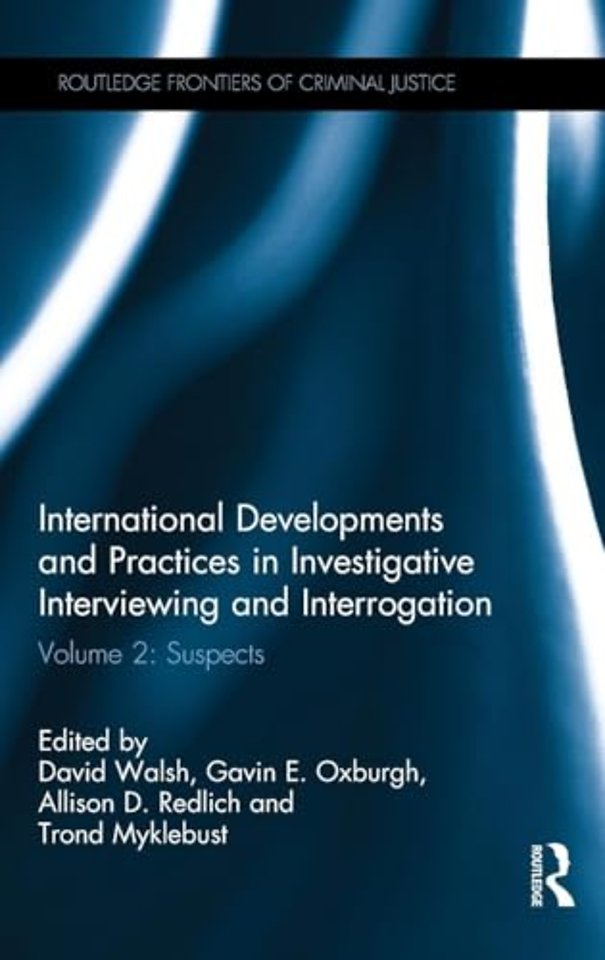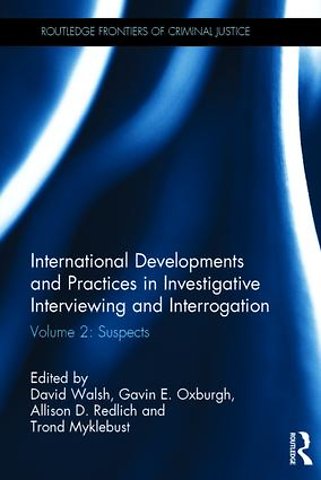International Developments and Practices in Investigative Interviewing and Interrogation
Volume 2: Suspects
Samenvatting
Techniques in the investigative interviewing and interrogation of victims, witnesses and suspects of crime vary around the world, according to a country’s individual legal system, religion and culture. Whereas some countries have developed certain interview protocols for witnesses (such as the ABE Guidelines and the NICHD protocol when interviewing children) and the PEACE model of interviewing suspects, other countries continue to use physical coercion and other questionable tactics to elicit information.
Until now, there has been very little empirical information about the overall interview and interrogation practices in non-western countries, especially the Middle and Far East. This book addresses this gap, bringing together international experts from over 25 countries and providing in-depth coverage of the various interview and interrogation techniques used across the globe. Volume 2 focuses on the interviewing of crime suspects, aiming to provide the necessary information for an understanding of how law enforcement agencies around the world gain valuable information from suspects in criminal cases.
Together, the chapters that make up this volume and the accompanying volume on interviewing witnesses and victims, draw on specific national case studies and practices, examine contemporary challenges and identify best practice to enable readers to develop an international, as well as a comparative, perspective of developments worldwide in this important area of criminal investigation.
This book will be an essential resource for academics and students engaged in the study of policing, criminal investigation, forensic psychology and criminal law. It will also be of great interest to practitioners, legal professionals and policymakers around the world.
Specificaties
Inhoudsopgave
1. China, Marvin Zalman and Yuning Wu
2. Indonesia, the Philippines, & Sri Lanka, Jane Goodman-Delahunty
3. Iran, Nargess Tavassolian, Mohammad Hedayati-Kakhki, Alexandra Harrington and Kamiar Alaei
4. Israel, Carmit Katz
5. Japan, Taeko Wachi and Kazumi Watanabe
6. Australia and New Zealand, Amanda Cain, Nina J. Westera and Mark Kebbell
7. Belgium, Miet Vanderhallen, Michelle DeJong and Geert Vervaeke
8. England and Wales, Colin Clarke and Rebecca Milne
9. Estonia, Raivo Öpik and Kristjan Kask
10. France, Samuel Demarchi and Laurent Delhalle
11. Germany, Renate Volbert and Bianca Baker
12. Italy, A. Zappalà, F. Pompedda, V. M. Rossini and M. Scarabello
13. Netherlands, Martijn van Beek and Jos Hoekendijk
14. Portugal, Carlos E. Peixoto, Alexandra Seabra and António Castanho
15. Scandinavia, Ivar A. Fahsing, Kristina Kepinska Jakobsen and Harriet Jakobsson Öhrn
16. Scotland, Annabelle Nicol, David La Rooy and Stuart Houston
17. Slovenia, Igor Areh, Sabina Zgaga and Benjamin Flander
18. Switzerland, J. Courvoisier, C. Sellie and M. St-Yves
19. Canada, Brent Snook, Kirk Luther and Todd Barron
20. Mexico, Gustavo Fondevila
21. USA, Christopher E. Kelly and Christian A. Meissner
Conclusion, Dave Walsh, Allison Redlich, Gavin Oxburgh and Trond Myklebust.
Anderen die dit boek kochten, kochten ook
Net verschenen
Rubrieken
- aanbestedingsrecht
- aansprakelijkheids- en verzekeringsrecht
- accountancy
- algemeen juridisch
- arbeidsrecht
- bank- en effectenrecht
- bestuursrecht
- bouwrecht
- burgerlijk recht en procesrecht
- europees-internationaal recht
- fiscaal recht
- gezondheidsrecht
- insolventierecht
- intellectuele eigendom en ict-recht
- management
- mens en maatschappij
- milieu- en omgevingsrecht
- notarieel recht
- ondernemingsrecht
- pensioenrecht
- personen- en familierecht
- sociale zekerheidsrecht
- staatsrecht
- strafrecht en criminologie
- vastgoed- en huurrecht
- vreemdelingenrecht







